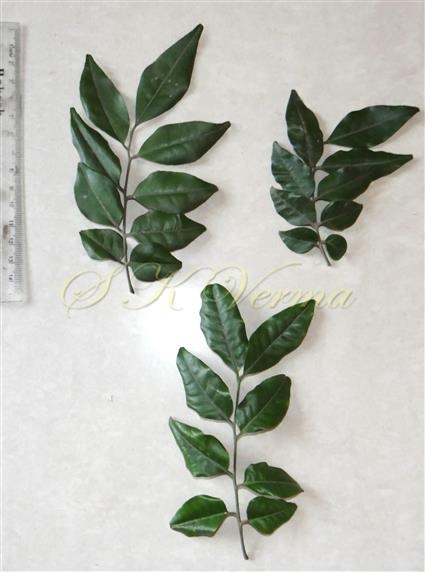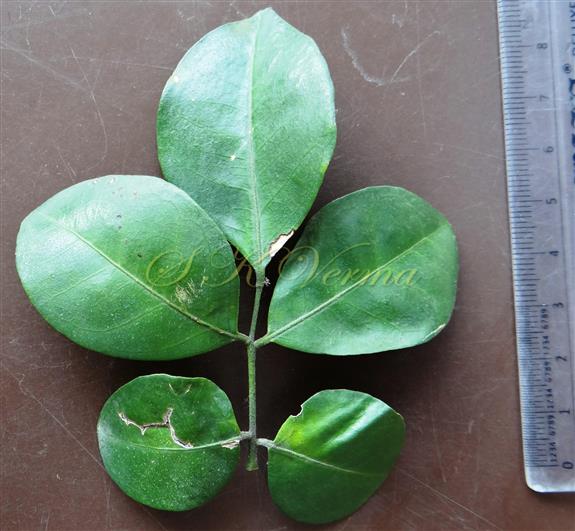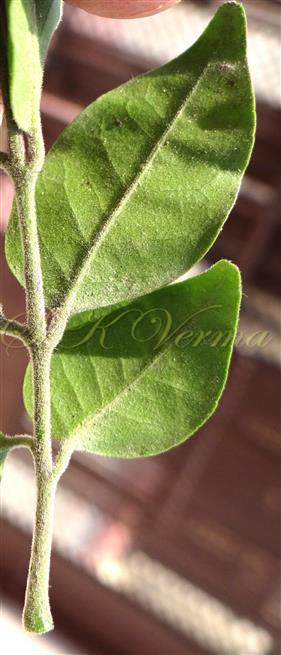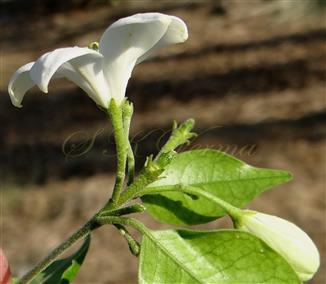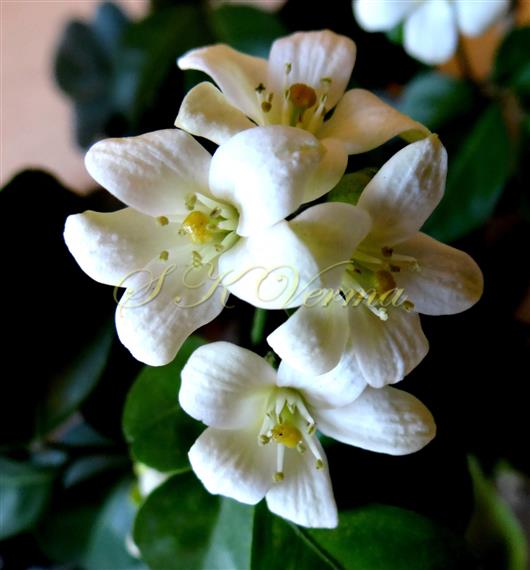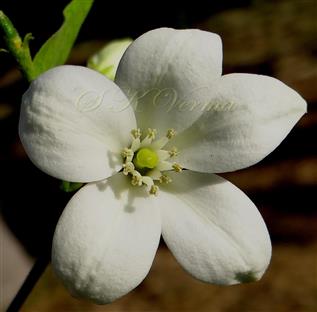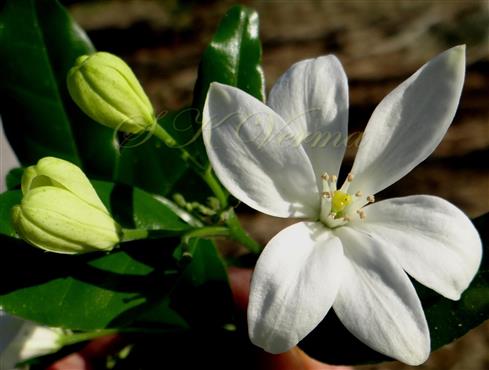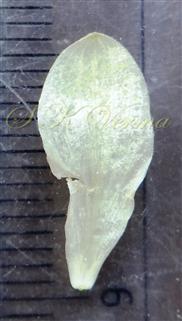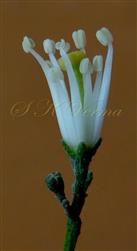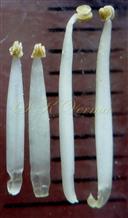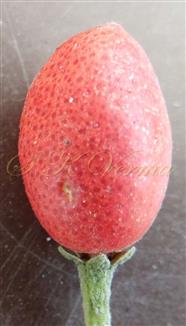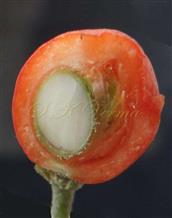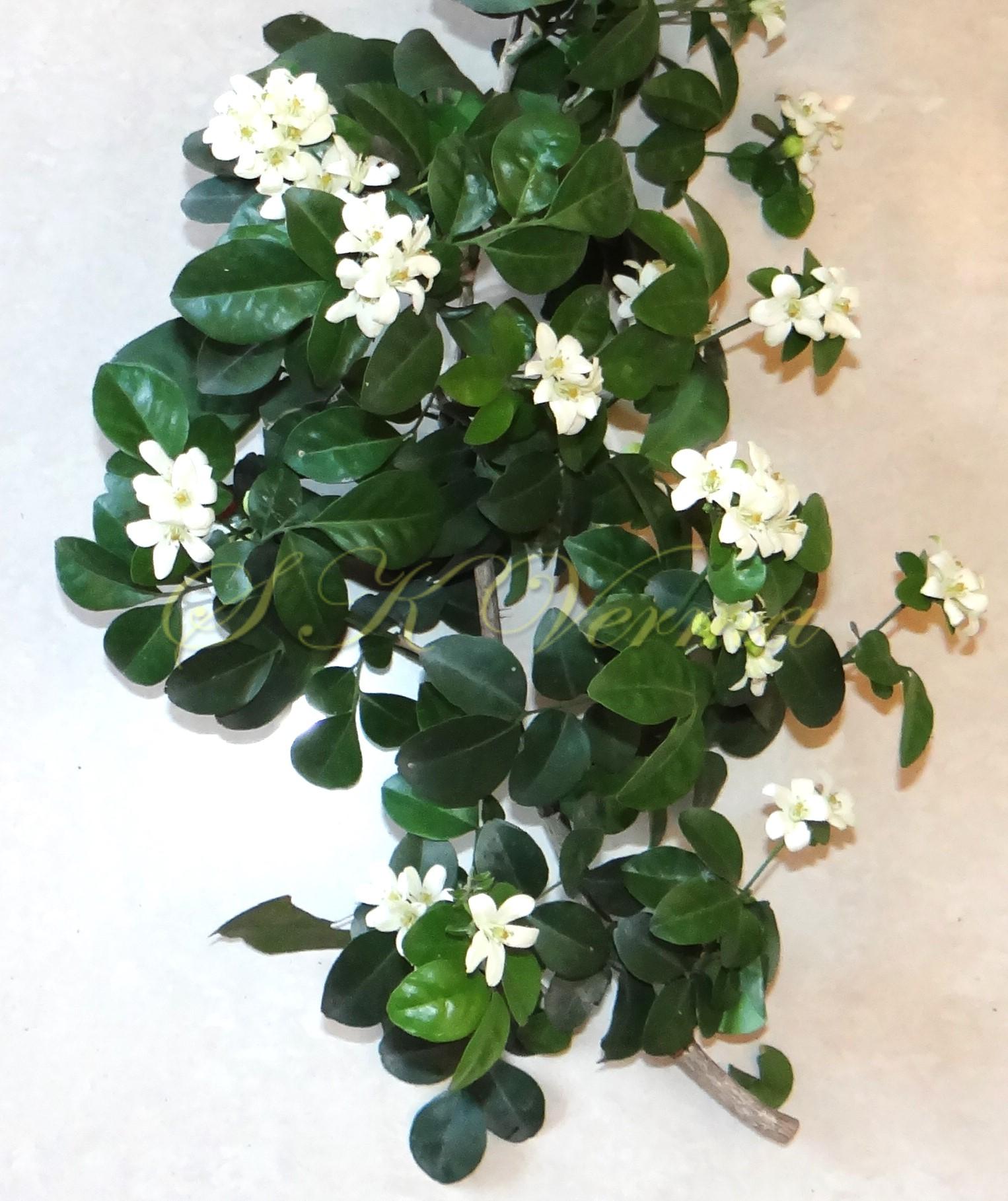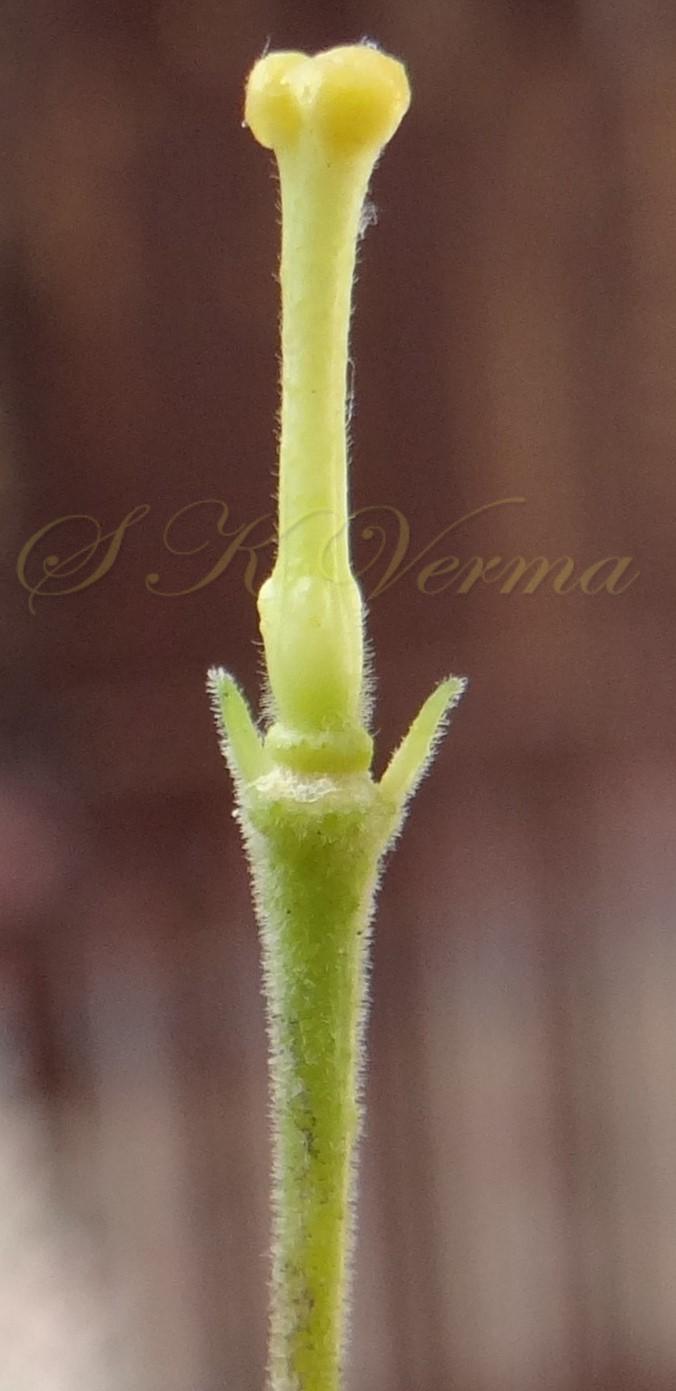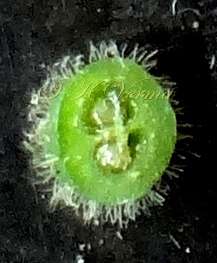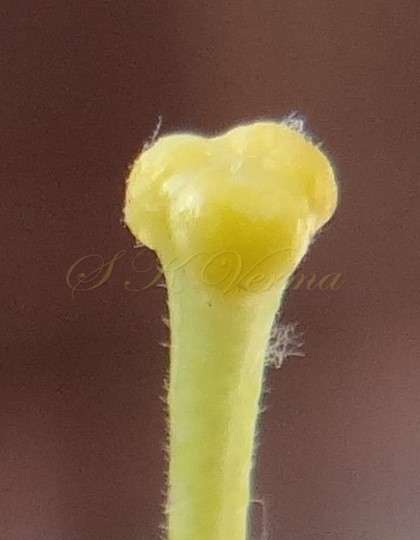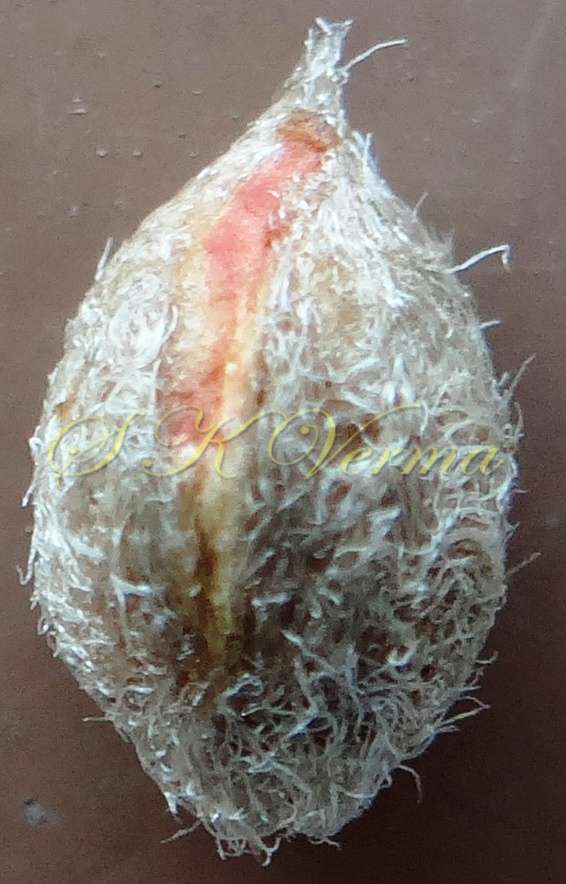Murraya paniculata
Murraya paniculata
(L.) Jack, Malayan Misc. 1: 31. 1820; Hook. f., Fl. Brit. India 1: 503. 1875; Cooke, Fl. Pres. Bomb. 1: 193. 1901; Talbot, For. Fl. Bomb. Pres. and Sind, 1: 193. 1909; Bamber, Fl. Punj. 130. 1916; Kashyap, Fl. Lahore 66: 1936; Stewart, Punj. Pl. 349. 1869; China @ eFloras.org 11: 86; Fl. Pak. @ eFloras.org p. 17; Murraya exotica L., Mant. 2: 563. 1771; Parker, For. Fl. Punj. ed. 1: 66. 1918 (Reprint 1973).
An evergreen shrub or small tree, up to 3 m tall with grey corky bark, young branches pubescent. Leaves alternate, pari- or imparipinnate, rachis up to 10 cm long including petioles, petioles 0.6-2 cm long; leaflets 3-9, 1.8-6.5 cm x 1.2-4 cm, lower small, terminal largest, suborbicular to ovate-elliptic or rhomboid, apex acute to acuminate, occasionally emarginate, margin entire or undulate, upper surface glabrous and shining and lower surface pubescent, base acute, oblique; petiolules 2.5-5 mm long; rachis, petioles and petiolules pubescent. Inflorescences terminal or terminal and axillary (leaves reduced) 3-flowered cymes. Flowers actinomorphic, bisexual, 5-merous, hypogynous, 2.5-4.5 cm across, white, very fragrant. Calyx tube ca. 2 mm long, lobes 5, 0.5 mm long, triangular, pubescent, gland-dotted, persistent in fruit. Petals 5, 1.3-2.2(-3) cm x 0.4-0.9(-1.1) cm, erect at base, upper half spreading, oblong, obovate to oblanceolate, white, sparsely pubescent, gland-dotted. Stamens 10, free, 5-6 to 7-8 mm long, alternately unequal in length; filaments subulate; anthers 0.5 mm long. Ovary ca. 2 mm long, 2-locular, 1 ovule per loculus, pilose; style ca. 3 mm long, sparsely hairy; stigma 2- or 3-lobed, capitate; disk annular, more or less elongated. Berry ovoid, 7-13 mm x 6-10 mm, beaked at top, deep orange to red when ripe, with persistent calyx; 1-2 seeded. Seeds ca. 7 mm x 4 mm, villous.
Common Names: Orange Jasmine, Chinese Box; Kamini (Hindi)

